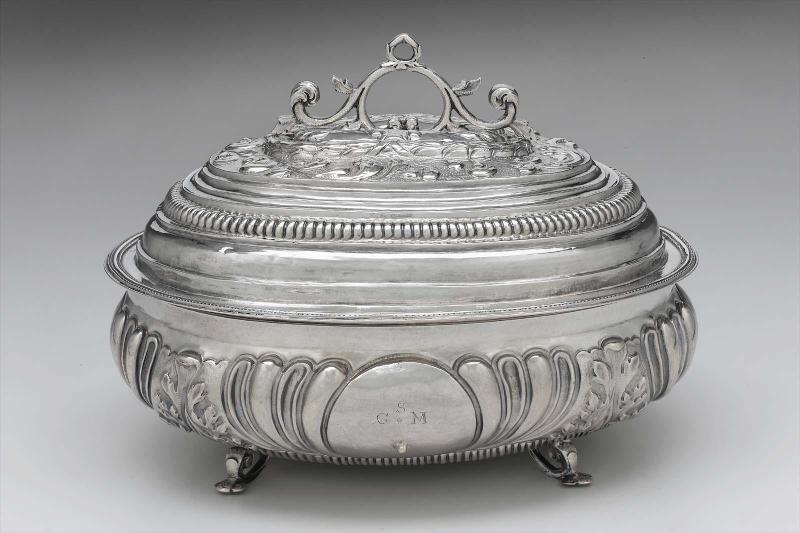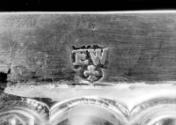Sugar box
Edward Winslow
(American, 1669–1753)
about 1702
Object PlaceBoston, Massachusetts, United States
Medium/TechniqueSilver
DimensionsOverall (h x w x d): 17 x 21.6 x 14.6 cm (6 11/16 x 8 1/2 x 5 3/4 in.); 22 oz., 15 1/2 dwt.
Credit LineThe Philip Leffingwell Spalding Collection—Given in his memory by Katharine Ames Spalding and Philip Spalding, Oakes Ames Spalding, and Hobart Ames Spalding
Accession number42.251
On View
On viewClassificationsSilver hollowware
Collections
Sweetness and silver were luxuries purchased at a great price-in both human and economic terms-in the seventeenth and eighteenth centuries. Inhumane slave labor was used to extract silver ore from the mines at Potosi and elsewhere in South America and to grow and harvest sugar cane in the West Indies. Wealthy consumers then expended considerable sums to buy the imported sugar and to commission elaborate silver vessels, such as these three sugar boxes, to hold the precious substance on their tables.Of the ten known surviving American sugar boxes, nine, including the three examples shown here, are by John Coney or Edward Winslow of Boston, while one anomalous example is marked by Daniel Greenough of New Hampshire. Fashioned in the form of Italian cassoni (chests) and richly ornamented, these boxes are among the finest examples of early American silver. The elaborate chasing on each box may be the work of a skilled immigrant specialist. Nathaniel Gay may have been responsible for the chasing on the early Coney (13.421), while Henry Hurst may have performed a similar role for the this example. In the seventeenth century, sugar was thought to possess special powers: one writer in 1637 argued that it "nourishes the body, generates good blood, cherishes the spirit, makes people prolific, [and] strengthens children in the womb." The iconography of the boxes alludes to marriage, fecundity, and fertility, making them "colonial expressions of courtly love" perfectly suited to house a material thought to contain reproductive and amatory properties.This text was adapted from Ward, et al., MFA Highlights: American Decorative Arts & Sculpture (Boston, 2006) available at www.mfashop.com/mfa-publications.html.
InscriptionsEngraved S/ GM on front medallionProvenanceOriginal owners unknown; Gurdon and Mary (Whittingham or Withington) Saltonstall of Boston and New London, Connecticut, m. Nov. 13, 1712; 1913 lent by Miss Lydia C Head to MFA; 1915, returned; by 1936, to Philip L Spalding; 1936 temporary loan of Mr Spalding to MFA; 1940, transfered to Mrs. Spalding; 1942, gift of Mrs. Spalding and children to MFA. (Accession date: April 9 and 16, 1942)















